Research on Application and International Policy of Renewable Energy in Buildings
Abstract
1. Introduction
2. Global Renewable Energy
3. Renewable Energy Applications in Building
3.1. Building Application of Solar Energy Technology
3.2. Building Applications for Geothermal Pump Technology
3.3. Building Energy System
4. Development of Renewable Power Buildings
4.1. Promotion of Renewable Energy Buildings
4.2. Green Construction Development
5. Renewable Energy Application Policy Analysis
5.1. International Policy Analysis
5.2. Application of the Evaluation Criteria
6. Conclusions
- (1)
- In terms of the current situation regarding renewable energy development in the world, the proportions of hydropower, photovoltaic, natural gas, and other renewable energy sources have changed, compared with the proportions of traditional non-renewable energy sources. According to the survey, the proportion of renewable energy sources has continued to increase. At the same time, by comparing the auction contract price and the installed capacity of renewable energy, it is clear that the promotion of renewable energy is gradually improving in China and other countries.
- (2)
- The application of renewable energy technology in buildings, from the perspective of solar energy utilization technology, ground-source heat pump technology, and other technologies, has been analyzed, and, at the same time, the latest technological developments have been discussed. The development prospects of renewable energy buildings are discussed from the point of view of the economic benefits of green finance, the promotion and social support of renewable energy, and the environmental benefits of green buildings.
- (3)
- The energy agreement and green building certification system have been analyzed in this paper. The green certification system is constantly being updated to make the certification classification more scientific, and the strategic agreements of various countries provide good prospects for worldwide energy development.
Author Contributions
Funding
Institutional Review Board Statement
Informed Consent Statement
Data Availability Statement
Conflicts of Interest
References
- Shakeel, M. Analyses of energy-GDP-export nexus: The way-forward. Energy 2020, 216, 119280. [Google Scholar] [CrossRef]
- Shakeel, M. Economic output, export, fossil fuels, non-fossil fuels and energy conservation: Evidence from structural break models with VECMs in South Asia. Environ. Sci. Pollut. Res. 2020, 28, 3162–3171. [Google Scholar] [CrossRef]
- Shandong Energy Regulatory Office. Continues to Provide Good Energy Regulatory Services to Promote High-Quality Development of Renewable Energy. Available online: http://www.nea.gov.cn/2022-04/02/c_1310545379.htm (accessed on 17 January 2023). (In Chinese)
- Renewables 2022. Available online: https://www.iea.org/corrections (accessed on 2 February 2023).
- 2021 Global Renewable Energy Market Research and Analysis. Available online: https://business.sohu.com/a/472486136_418320 (accessed on 2 February 2023). (In Chinese).
- Renewables 2021 Analysis and Forecast to 2026. Available online: https://www.iea.org/corrections (accessed on 2 February 2023).
- Notice of the Ministry of Finance and the Ministry of Housing and Urban-Rural Development on the Improvement of Renewable Energy Building Application Policies and the Adjustment of Capital Allocation Management. Available online: http://www.gov.cn/gongbao/content/2012/content_2275419.htm (accessed on 17 January 2023). (In Chinese)
- Notice of the National Energy Administration on Doing a Good Job of Renewable Energy Heating According to Local Conditions. Available online: http://www.gov.cn/zhengce/zhengceku/2021-02/13/content_5586982.htm (accessed on 17 January 2023). (In Chinese)
- The Fourteenth Five-Year Plan for Renewable Energy Development in Shandong Province. Available online: http://nyj.shandong.gov.cn/art/2022/2/8/art_253733_10291563.html (accessed on 17 January 2023). (In Chinese)
- Zhai, H.W. The symbol of the world’s solar energy architecture—China’s Sun Valley Sun and Moon Altar·“Minimal emission” building. Energy Conserv. Environ. Prot. 2010, 6, 43–45. (In Chinese) [Google Scholar]
- Daigle, Q.; O’Brien, P.G. Heat Generated Using Luminescent Solar Concentrators for Building Energy Applications. Energies 2020, 13, 5574. [Google Scholar] [CrossRef]
- Røyset, A.; Kolås, T.; Jelle, B.P. Coloured building integrated photovoltaics: Influence on energy efficiency. Energy Build. 2019, 208, 109623. [Google Scholar] [CrossRef]
- Li, G.; Xuan, Q.; Akram, M.; Akhlaghi, Y.G.; Liu, H.; Shittu, S. Building integrated solar concentrating systems: A review. Appl. Energy 2020, 260, 114288. [Google Scholar] [CrossRef]
- Li, W.S. Research on Energy-Saving Effect of Office Building Based on Solar-Reflective Cool Wall Technology; Huazhong University of Science and Technology: Wuhan, China, 2019. (In Chinese) [Google Scholar]
- Wu, T.; Song, C.X.; Long, Y. Study on Influence of Cool Wall Technology on Building Energy Consumption in Zones of Hot Summer and Warm Winter. Energy Energy Conserv. 2021, 3, 67–70. (In Chinese) [Google Scholar]
- Levinson, R. Using solar availability factors to adjust cool-wall energy savings for shading and reflection by neighboring buildings. Sol. Energy 2019, 180, 717–734. [Google Scholar] [CrossRef]
- Gagliano, A.; Aneli, S.; Nocera, F. Analysis of the performance of a building solar thermal facade (BSTF) for domestic hot water production. Renew. Energy 2019, 142, 511–526. [Google Scholar] [CrossRef]
- Valencia-Caballero, D.; Assoa, Y.-B.; Cambarau, W.; Therme, D.; Sanz, A.; Burgun, F.; Flores-Abascal, I.; Román-Medina, E. Performance analysis of a novel building integrated low concentration photovoltaic skylight with seasonal solar control. J. Build. Eng. 2022, 54, 104687. [Google Scholar] [CrossRef]
- Yamaç, H.I.; Koca, A. Experimental investigation of water flow window system and numerical modeling of solar thermal energy storage with phase change materials on the way of nearly zero energy buildings. J. Energy Storage 2021, 43, 103118. [Google Scholar] [CrossRef]
- Brito-Coimbra, S.; Aelenei, D.; Gomes, M.G.; Rodrigues, A.M. Building Facade Retrofit with Solar Passive Technologies: A Literature Review. Energies 2021, 14, 1774. [Google Scholar] [CrossRef]
- Penrod, E.B.; Prasanna, K.V. Design of a flat-plate collector for a solar earth heat pump. Solar Energy 1962, 6, 9–22. [Google Scholar] [CrossRef]
- Penrod, E.B.; Prasanna, K.V. Procedure for designing solar-earth heat pumps. Heat. Pip. Air Cond. 1969, 41, 97–100. [Google Scholar]
- Biglarian, H.; Saidi, M.H.; Abbaspour, M. Economic and environmental assessment of a solar-assisted ground source heat pump system in a heating-dominated climate. Int. J. Environ. Sci. Technol. 2019, 16, 3091–3098. [Google Scholar] [CrossRef]
- Guo, A.Z. Performance Simulation and Optimization of Solar Ground-Source Heat Pump Composite Heating System; Qingdao University: Qingdao, China, 2021. (In Chinese) [Google Scholar]
- Shah, A.R.; Krarti, M.; Huang, J. Energy Performance Evaluation of Shallow Ground Source Heat Pumps for Residential Buildings. Energies 2022, 15, 1025. [Google Scholar] [CrossRef]
- Shin, J.S.; Park, J.W.; Kim, S.H. Measurement and Verification of Integrated Ground Source Heat Pumps on a Shared Ground Loop. Energies 2020, 13, 1752. [Google Scholar] [CrossRef]
- Menegazzo, D.; Lombardo, G.; Bobbo, S.; De Carli, M.; Fedele, L. State of the Art, Perspective and Obstacles of Ground-Source Heat Pump Technology in the European Building Sector: A Review. Energies 2022, 15, 2685. [Google Scholar] [CrossRef]
- D’Agostino, D.; Mele, L.; Minichiello, F.; Renno, C. The Use of Ground Source Heat Pump to Achieve a Net Zero Energy Building. Energies 2020, 13, 3450. [Google Scholar] [CrossRef]
- Zarrella, A.; Zecchin, R.; Pasquier, P.; Guzzon, D.; Prataviera, E.; Vivian, J.; De Carli, M.; Emmi, G. Analysis of Retrofit Solutions of a Ground Source Heat Pump System: An Italian Case Study. Energies 2020, 13, 5680. [Google Scholar] [CrossRef]
- Wang, Y.; Wang, Y.; You, S.; Zheng, X.; Wei, S. Operation optimization of the coaxial deep borehole heat exchanger coupled with ground source heat pump for building heating. Appl. Therm. Eng. 2022, 213, 118656. [Google Scholar] [CrossRef]
- Ratchawang, S.; Chotpantarat, S.; Chokchai, S.; Takashima, I.; Uchida, Y.; Charusiri, P. A Review of Ground Source Heat Pump Application for Space Cooling in Southeast Asia. Energies 2022, 15, 4992. [Google Scholar] [CrossRef]
- Massarotti, N.; Mauro, A.; Normino, G.; Vanoli, L.; Verde, C.; Allocca, V.; Calcaterra, D.; Coda, S.; De Vita, P.; Forzano, C.; et al. Innovative Solutions to Use Ground-Coupled Heat Pumps in Historical Buildings: A Test Case in the City of Napoli, Southern Italy. Energies 2021, 14, 296. [Google Scholar] [CrossRef]
- Ma, C.-T.; Hsieh, C.-L. Investigation on Hybrid Energy Storage Systems and Their Application in Green Energy Systems. Electronics 2020, 9, 1907. [Google Scholar] [CrossRef]
- Korol, E.; Shushunova, N. Analysis and Valuation of the Energy-Efficient Residential Building with Innovative Modular Green Wall Systems. Sustainability 2022, 14, 6891. [Google Scholar] [CrossRef]
- Lu, S.; Fan, M.; Zhao, Y. A System to Pre-Evaluate the Suitability of Energy-Saving Technology for Green Buildings. Sustainability 2018, 10, 3777. [Google Scholar] [CrossRef]
- Tseng, K.H.; Chung, M.Y.; Chen, L.H.; Wei, M.Y. Applying an Integrated System of Cloud Management and Wireless Sensing Network to Green Smart Environments-Green Energy Monitoring on Campus. Sensors 2022, 22, 6521. [Google Scholar] [CrossRef] [PubMed]
- Koksalmis, G.H.; Pamuk, M. Promoting an energy saving technology in turkey: The case of green roof systems. Environ. Eng. Manag. J. 2021, 20, 863–870. [Google Scholar] [CrossRef]
- Notice of the Ministry of Housing and Urban-Rural Development of the National Development and Reform Commission on Strengthening the Construction of Supporting Facilities for the Renovation of Old Urban Residential Areas. Available online: http://www.gov.cn/zhengce/zhengceku/2021-09/08/content_5636173.htm (accessed on 17 January 2023). (In Chinese)
- Notice on Printing and Distributing the List of Reproducable Policies and Mechanisms for the Reconstruction of Old Town Residential Areas (the Fourth Batch). Available online: http://www.gov.cn/zhengce/zhengceku/2021-11/23/content_5652952.htm (accessed on 17 January 2023). (In Chinese)
- The Application Area of Renewable Energy Buildings in Chongqing Has Exceeded 15 Million Square Meters. Available online: http://www.gov.cn/xinwen/2019-03/21/content_5375698.htm (accessed on 17 January 2023). (In Chinese)
- Huang, C.M. Green construction technology in building decoration engineering. Sichuan Build. Mater. 2021, 47, 170–171. [Google Scholar]
- Gong, P.; Teng, H.J.; Zhu, J. Green construction of construction engineering. China Hous. Facil. 2021, 10, 29–30. [Google Scholar]
- The United States: Challenges Faced by Photovoltaic Development in the Post-Epidemic Era. Available online: https://baijiahao.baidu.com/s?id=1713848714787142157&wfr=spider&for=pc (accessed on 17 January 2023). (In Chinese).
- U.S. Energy Related Carbon Dioxide Emissions. 2021. Available online: https://www.eia.gov/environment/emissions/carbon/ (accessed on 17 January 2023).
- The Practice of Electricity Marketization Reform in the United States to Adapt to Renewable Energy. Available online: https://shoudian.bjx.com.cn/html/20201118/1116568.shtml (accessed on 17 January 2023). (In Chinese).
- Maine and New York Become the 6th and 7th States to Adopt 100% Clean Electricity Targets. Available online: https://www.eia.gov/todayinenergy/detail.php?id=41473 (accessed on 17 January 2023).
- Housing/Secretary/Unveils/Green/Housing/Revolution. Available online: https://www.gov.uk/government/news/housing-secretary-unveils-green-housing-revolution (accessed on 17 January 2023).
- Statistical Review of World Energy. Available online: https://www.bp.com/en/global/corporate/energy-economics/statistical-review-of-world-energy.html (accessed on 17 January 2023).
- «СОВЕТ РЫНКА» ПРИСТУПАЕТ К РАЗРАБОТКЕ СИСТЕМЫ КООРДИНАЦИИ ИСПОЛЬЗОВАНИЯ «ЗЕЛЁНЫХ» ИНСТРУМЕНТОВ. Available online: https://minenergo.gov.ru/node/21644 (accessed on 17 January 2023).
- НАЧАЛСЯ ПРИЕМ ЗАЯВОК НА УЧАСТИЕ ВО ВСЕРОССИЙСКОМ КОНКУРСЕ ПО ЭНЕРГОЭФФЕКТИВНОСТИ И ЭНЕРГОСБЕРЕЖЕНИЮ «ЭНЕРГОЭФФЕКТИВНОЕ ЖКХ». Available online: https://minenergo.gov.ru/node/22177 (accessed on 17 January 2023).
- Russia: Türkiye Can Become a Hub for Russian Gas Supply to Europe. Available online: https://baijiahao.baidu.com/s?id=1746625795586689843&wfr=spider&for=pc (accessed on 17 January 2023). (In Chinese).
- Ding, Y.T. Promote Energy Transformation and Enable Green Development. People’s Daily, 10 January 2022; p. 011. (In Chinese) [Google Scholar]
- The Transformation of Energy System Is Crucial to Achieve the Goal of Carbon Peak and Carbon Neutrality. Available online: http://www.nea.gov.cn/2021-04/30/c_139917008.htm (accessed on 17 January 2023). (In Chinese)
- Big Cats Gather at Greenbuild China Summit to Promote High-Quality Development of Green Buildings in Asia. Available online: http://www.sh.chinanews.com.cn/loushi/2019-10-23/65104.shtml (accessed on 17 January 2023). (In Chinese).
- UK BREEAM. UK BREEAM Assessment System. 2019. Available online: https://www.breeam.com/ (accessed on 15 January 2019).
- CASBEE. Japan CASBEE Assessment System. 2019. Available online: http://www.ibec.or.jp/CASBEE/english/ (accessed on 15 January 2019).
- GB/T 50378-2014; Green Building Evaluation Standard. Ministry of Housing and Urban-Rural Development of the People’s Republic of China: Beijing, China, 2014.
- The Revised Green Buildings Evaluation Standard Led by China Construction Research Institute Was Officially Implemented on August 1. Available online: http://www.sasac.gov.cn/n2588025/n2588124/c11212905/content.html?agt=15438 (accessed on 17 January 2023). (In Chinese)
- Liu, Q.; Wang, Z. Green BIM-based study on the green performance of university buildings in northern China. Energy, Sustain. Soc. 2022, 12, 12. [Google Scholar] [CrossRef]
- The “Fourteenth Five-Year Plan” Is the Critical Period and Window Period for Reaching the Carbon Peak—The Development of Green Energy Has “Unlimited Scenery”. Available online: http://www.sasac.gov.cn/n2588025/n2588139/c17949259/content.html (accessed on 17 January 2023). (In Chinese)
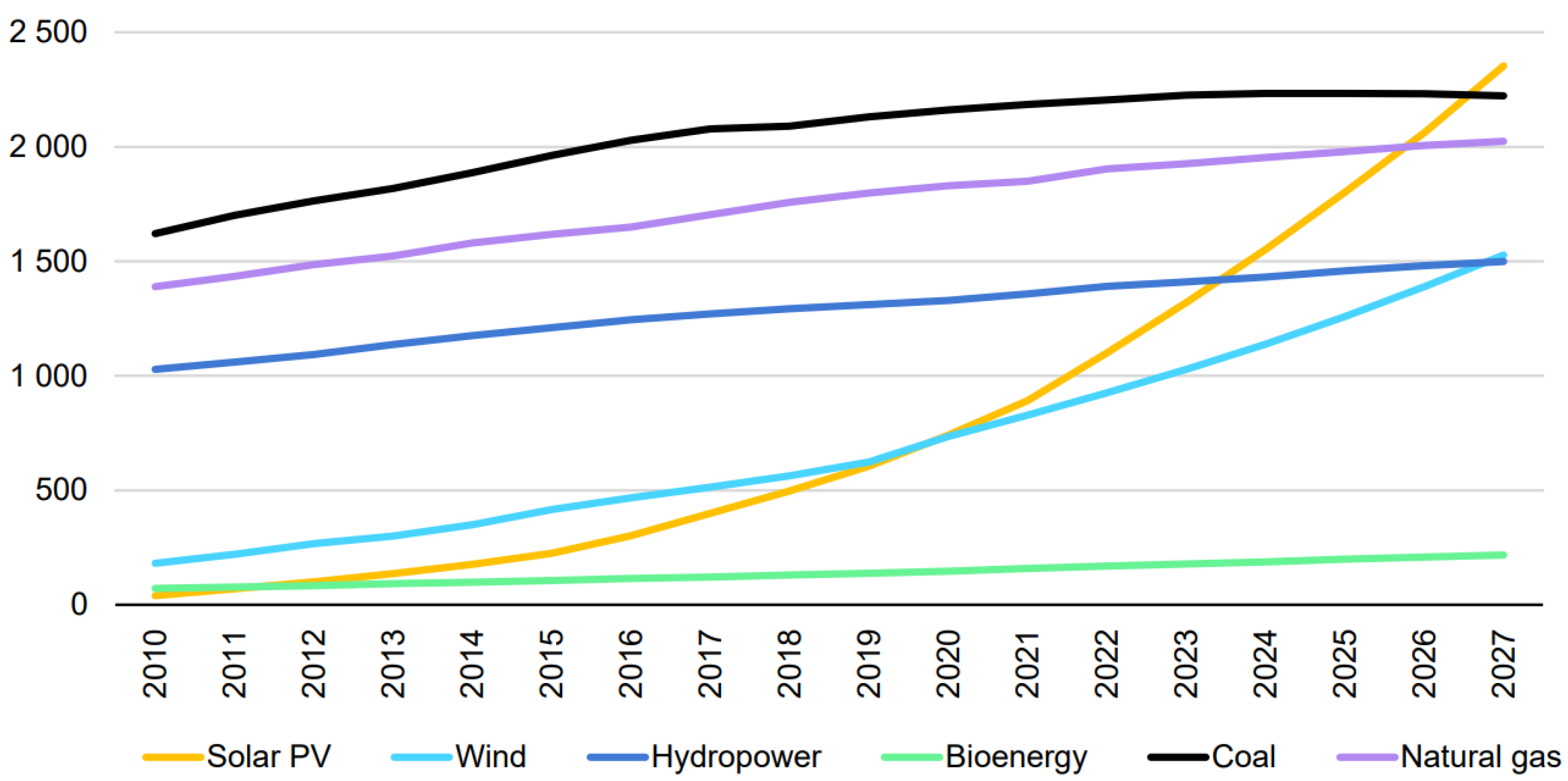
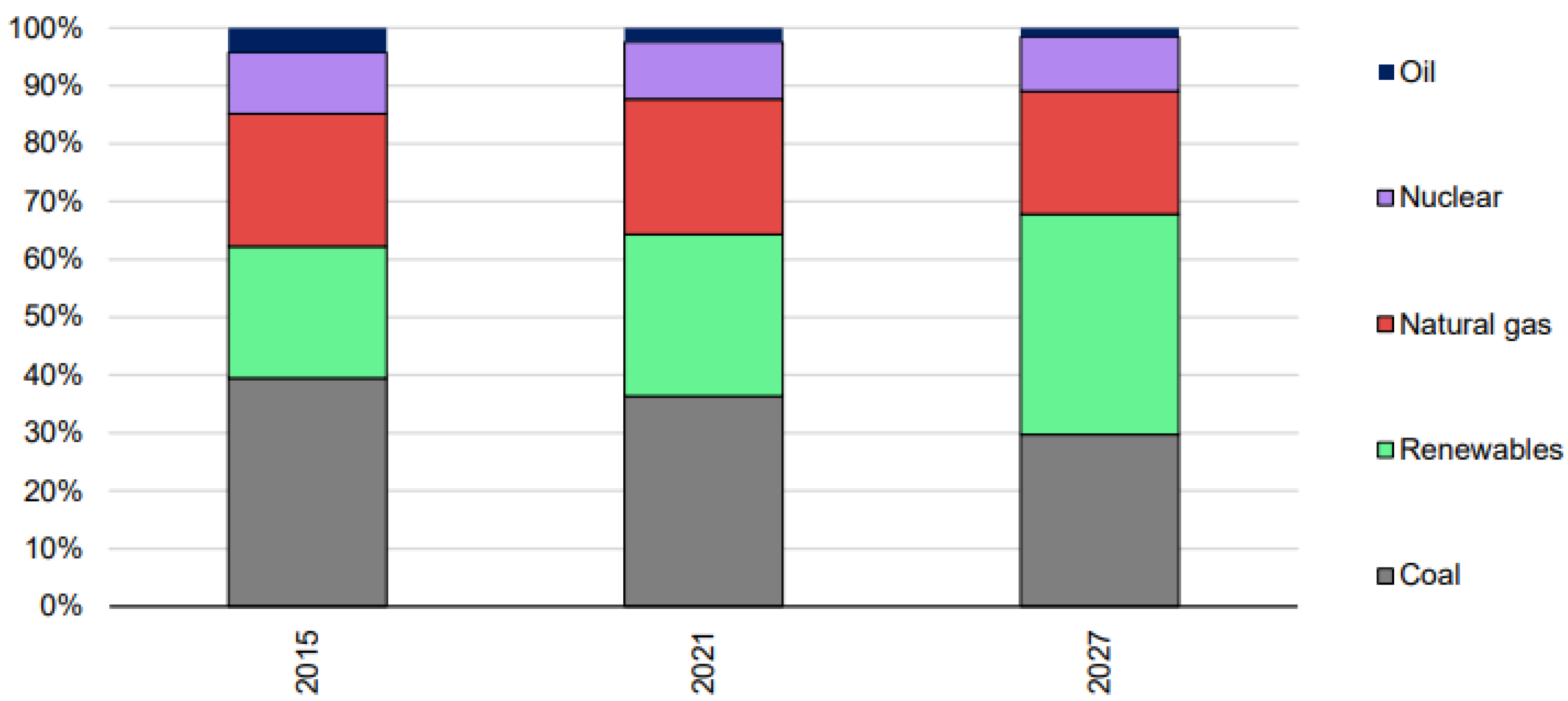
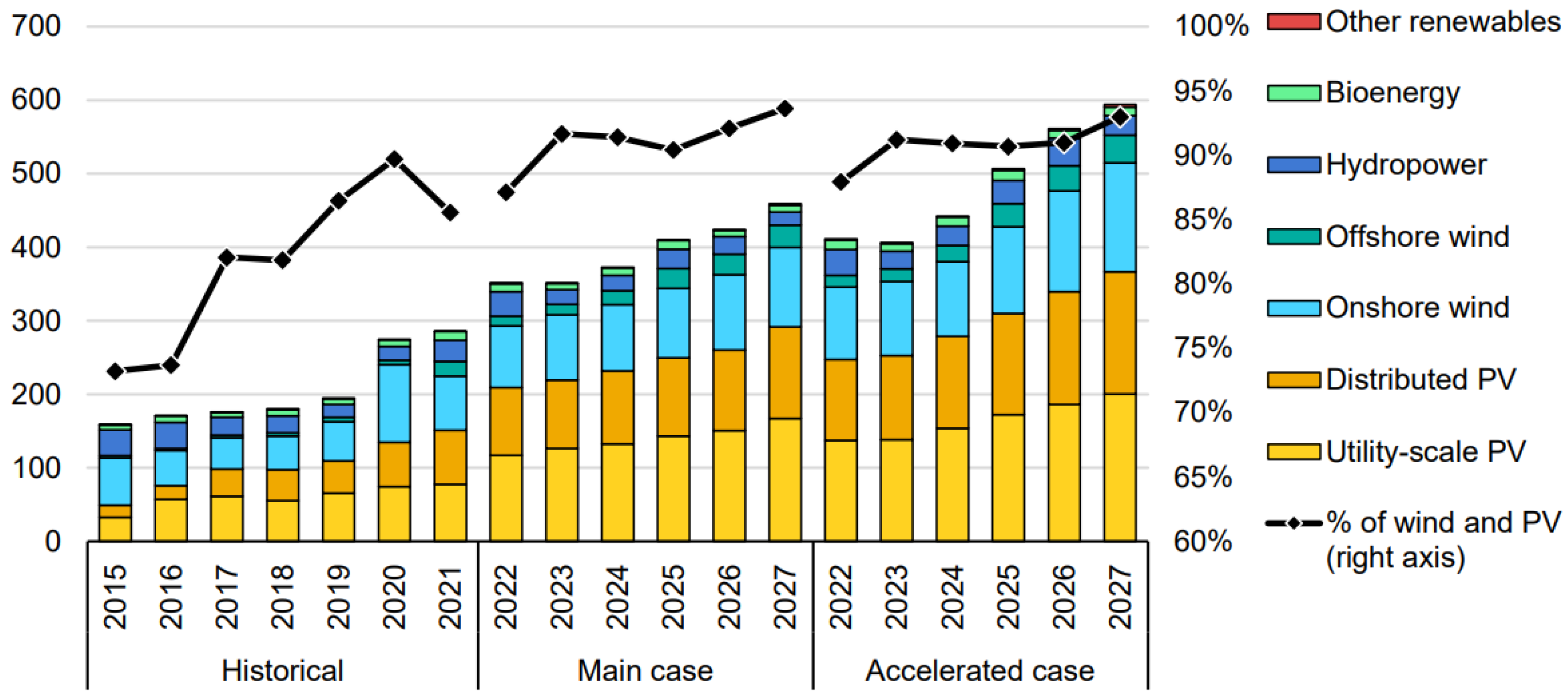
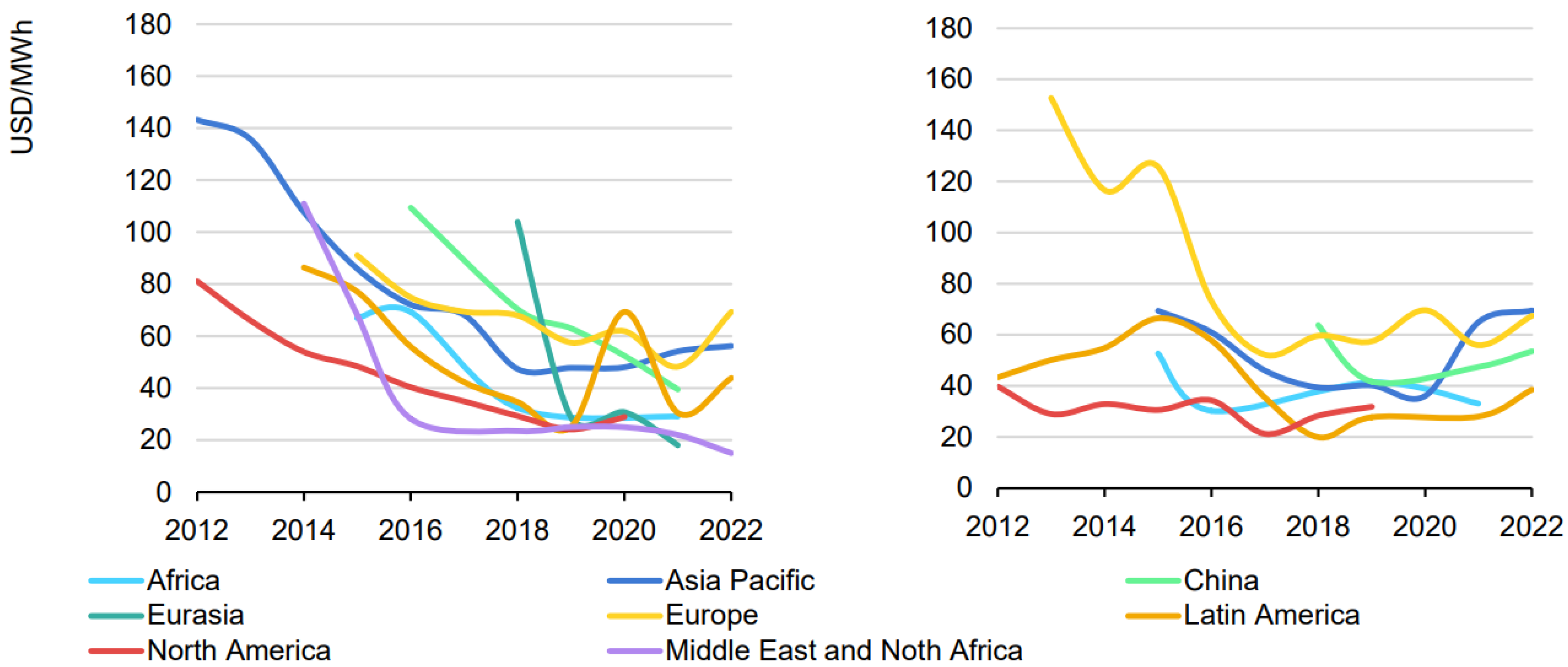
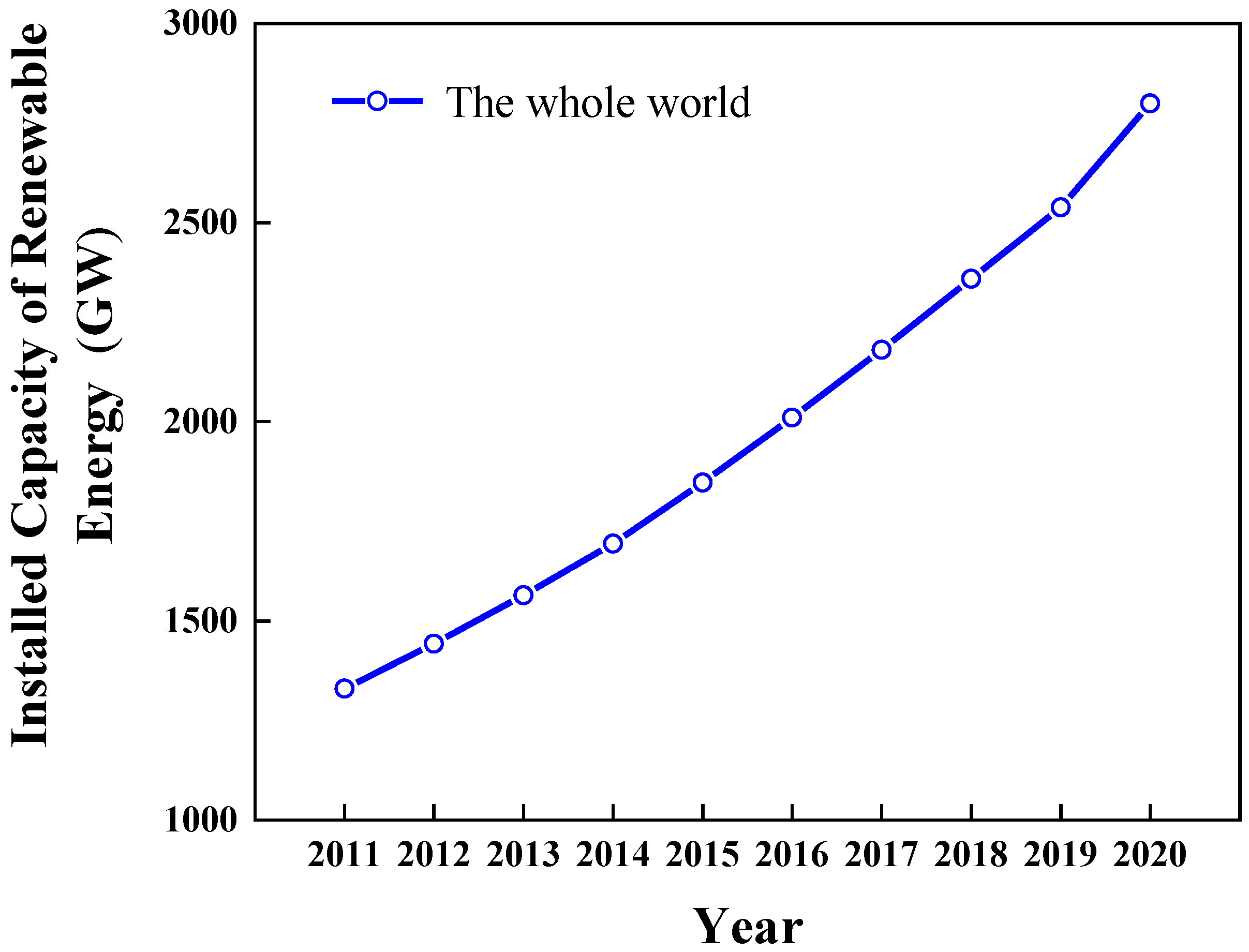
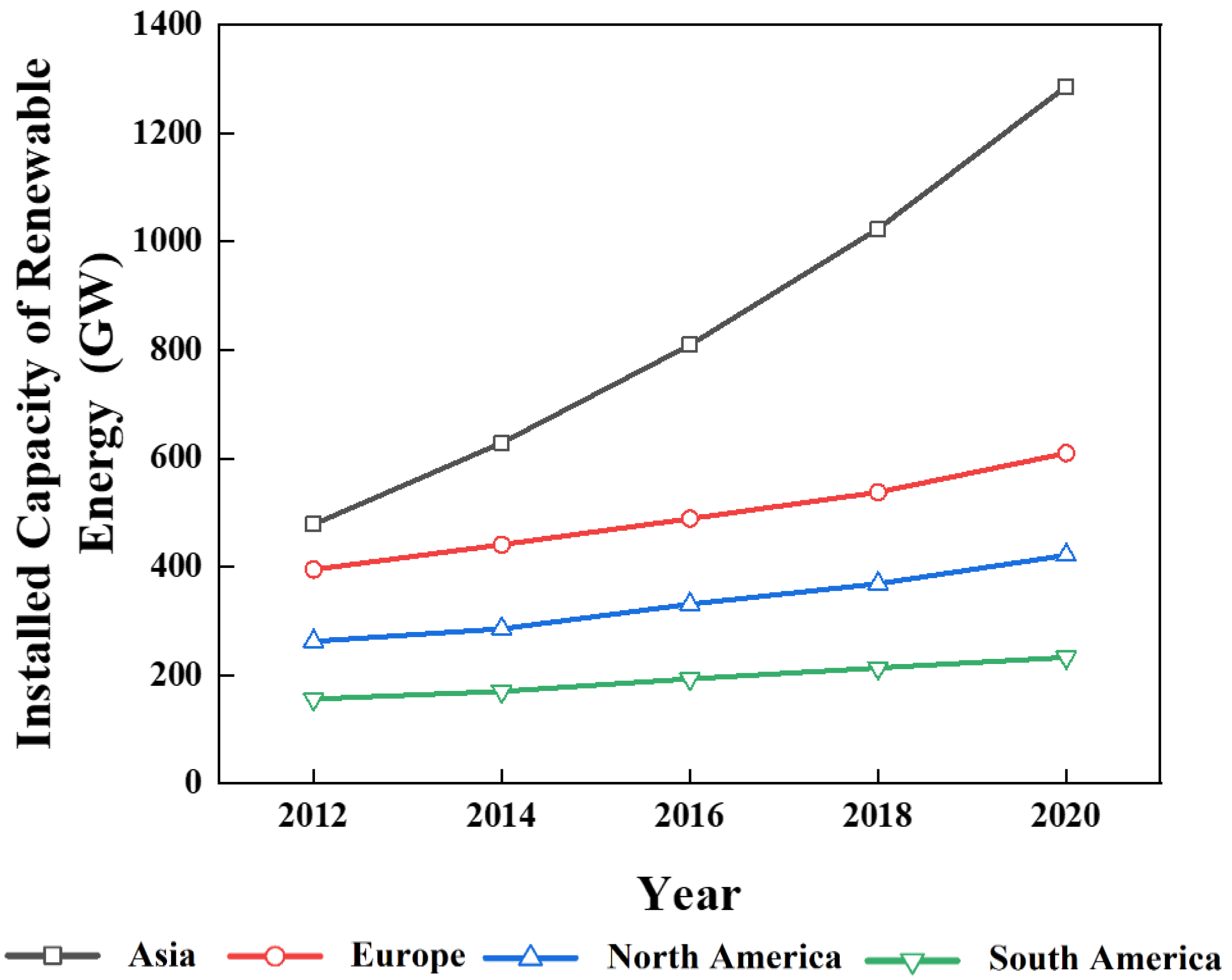
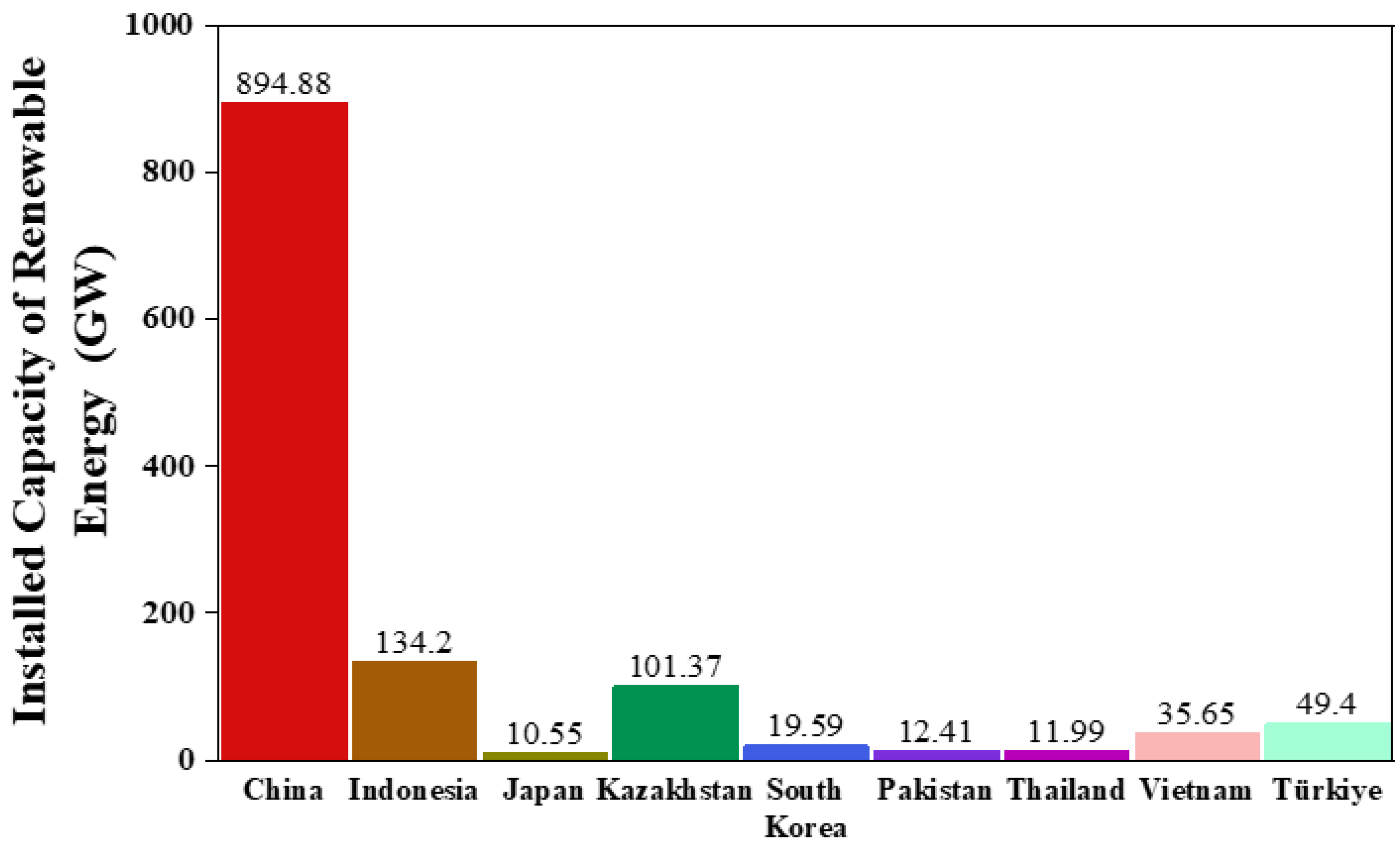

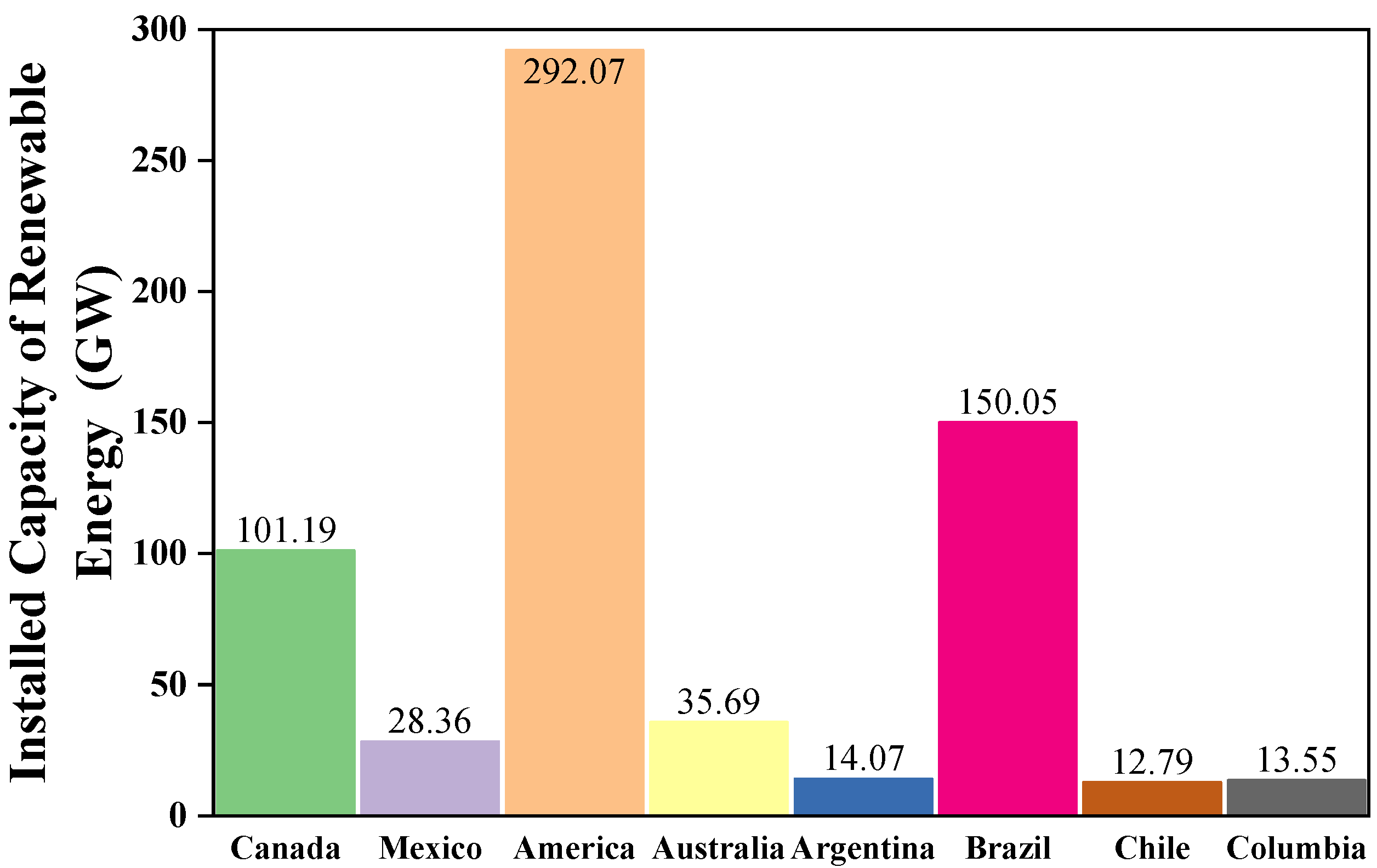
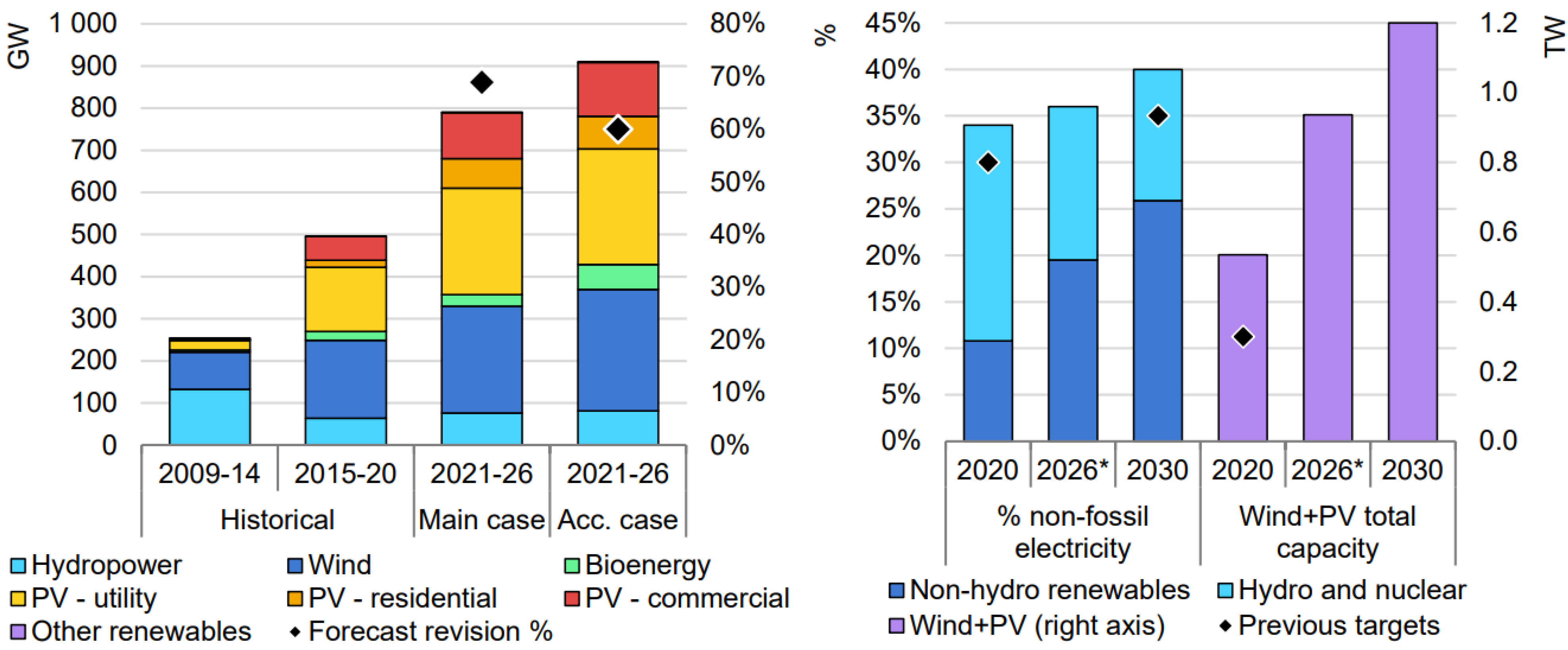
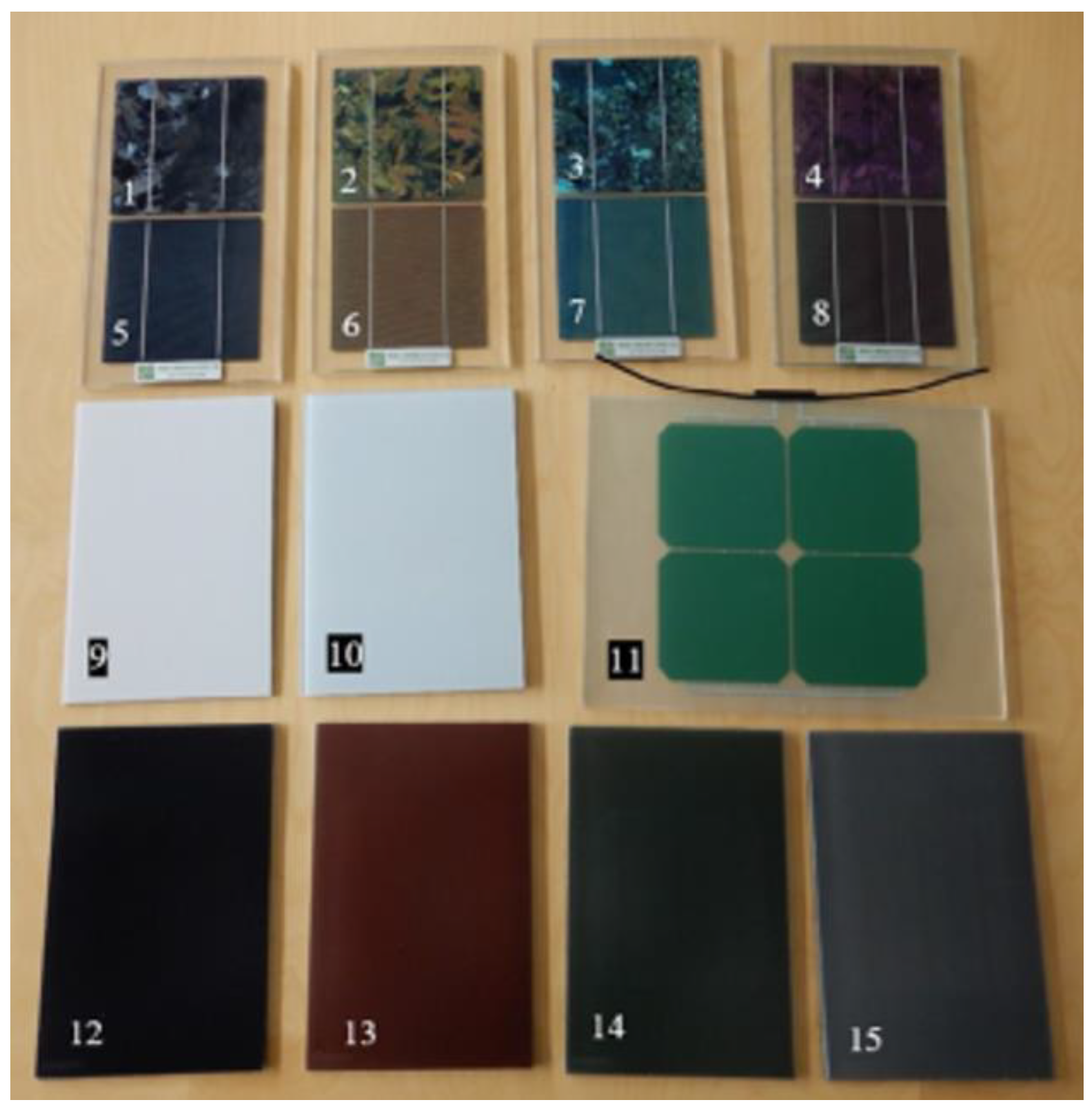

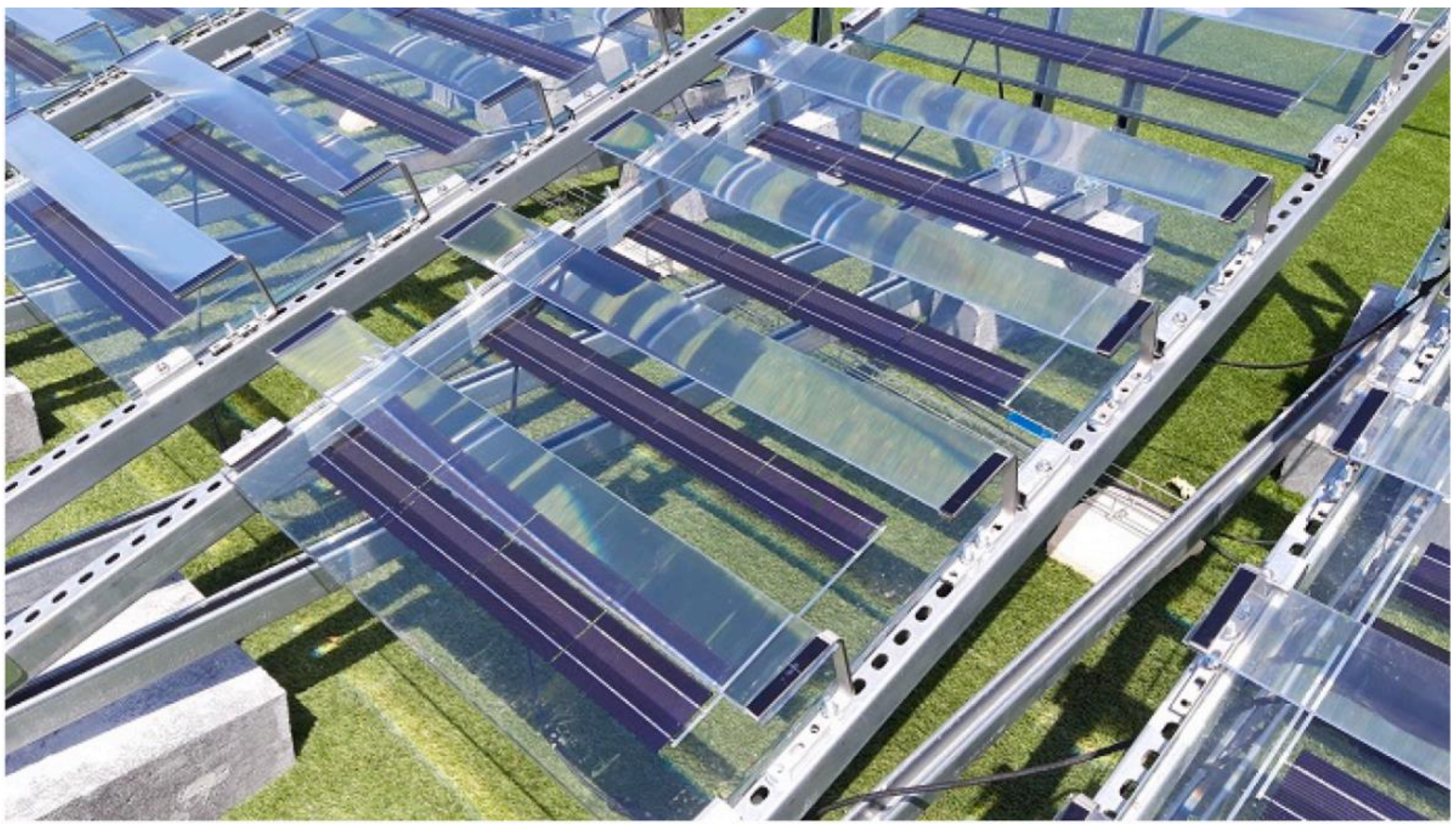
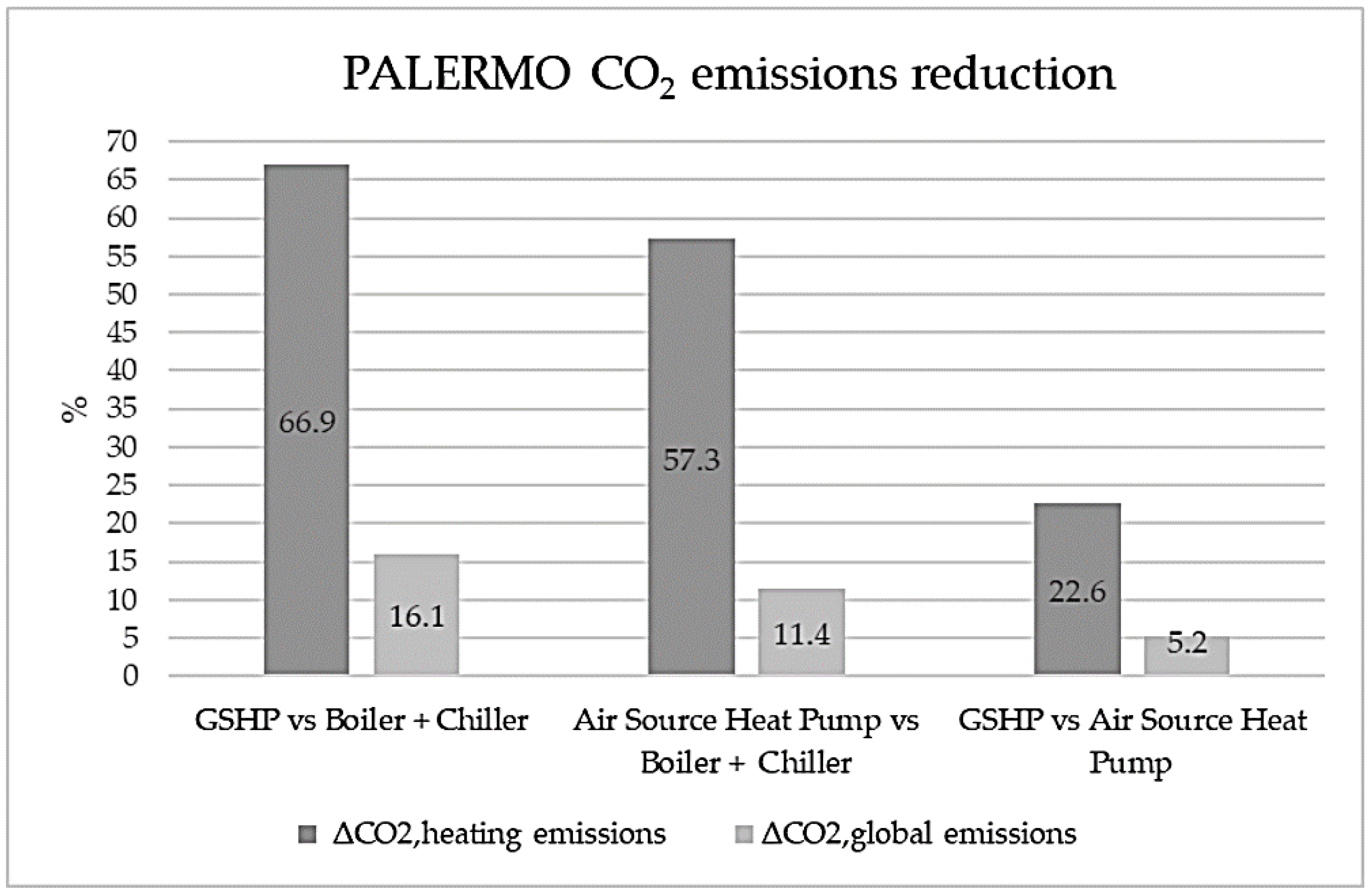
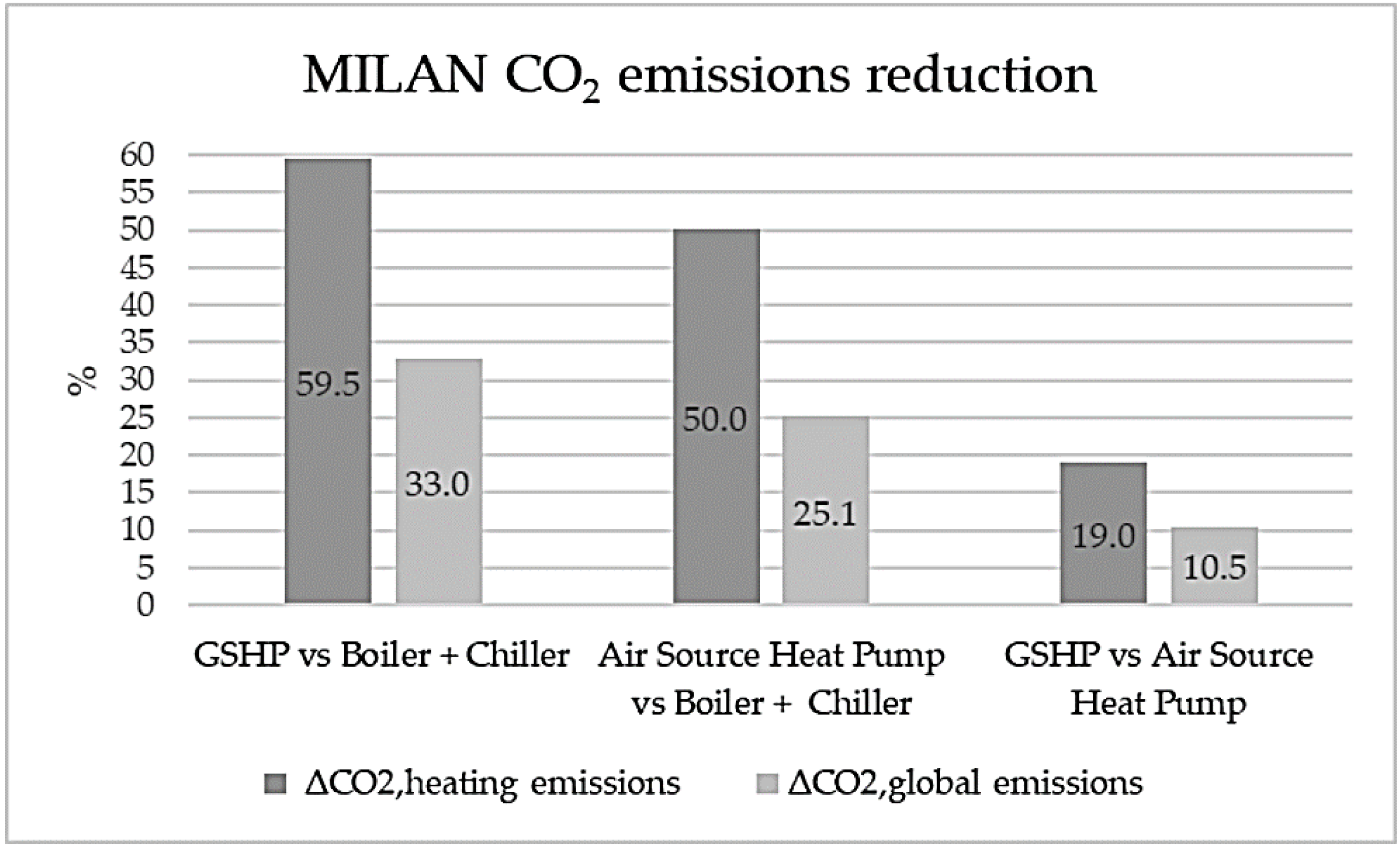
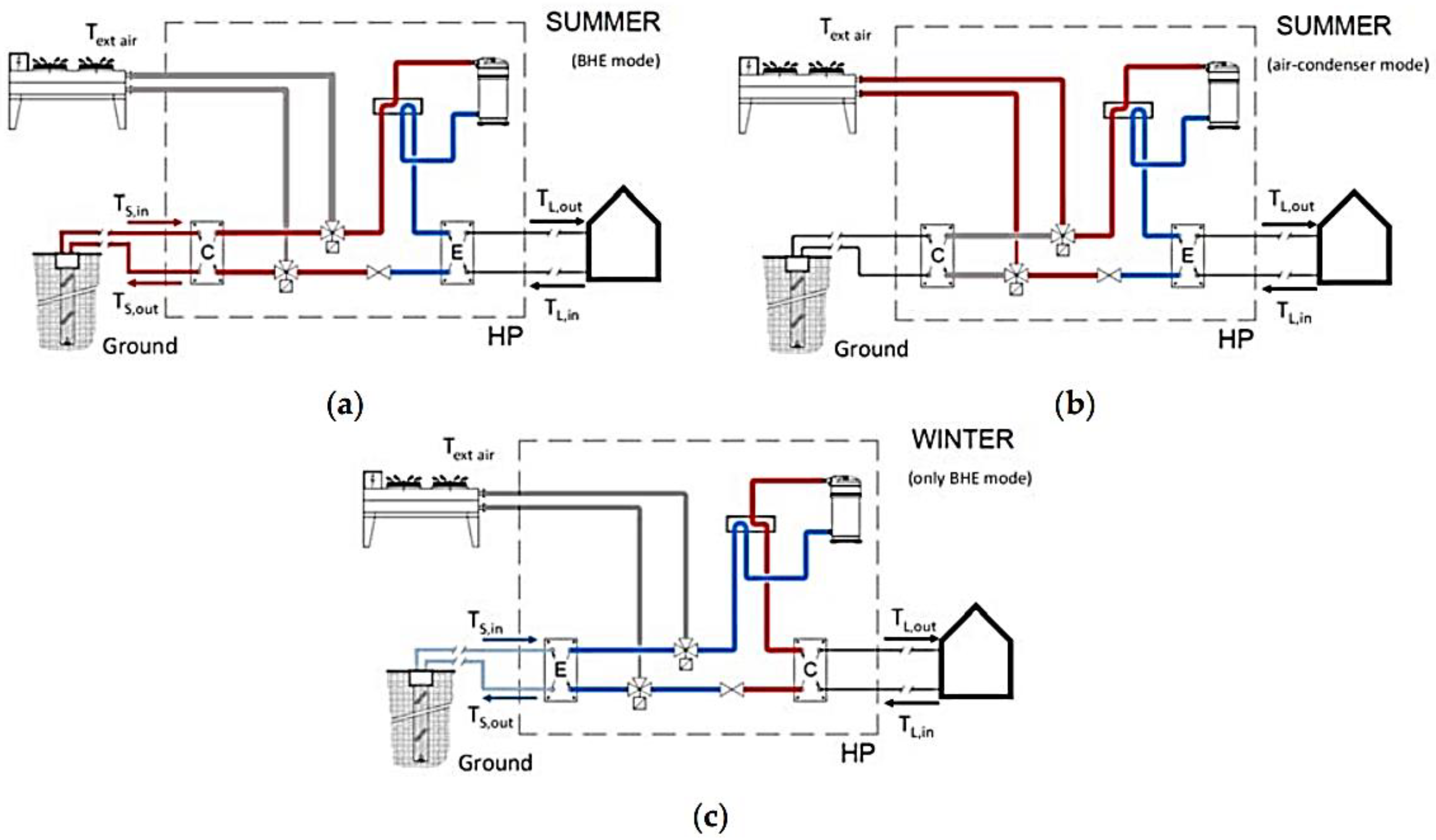
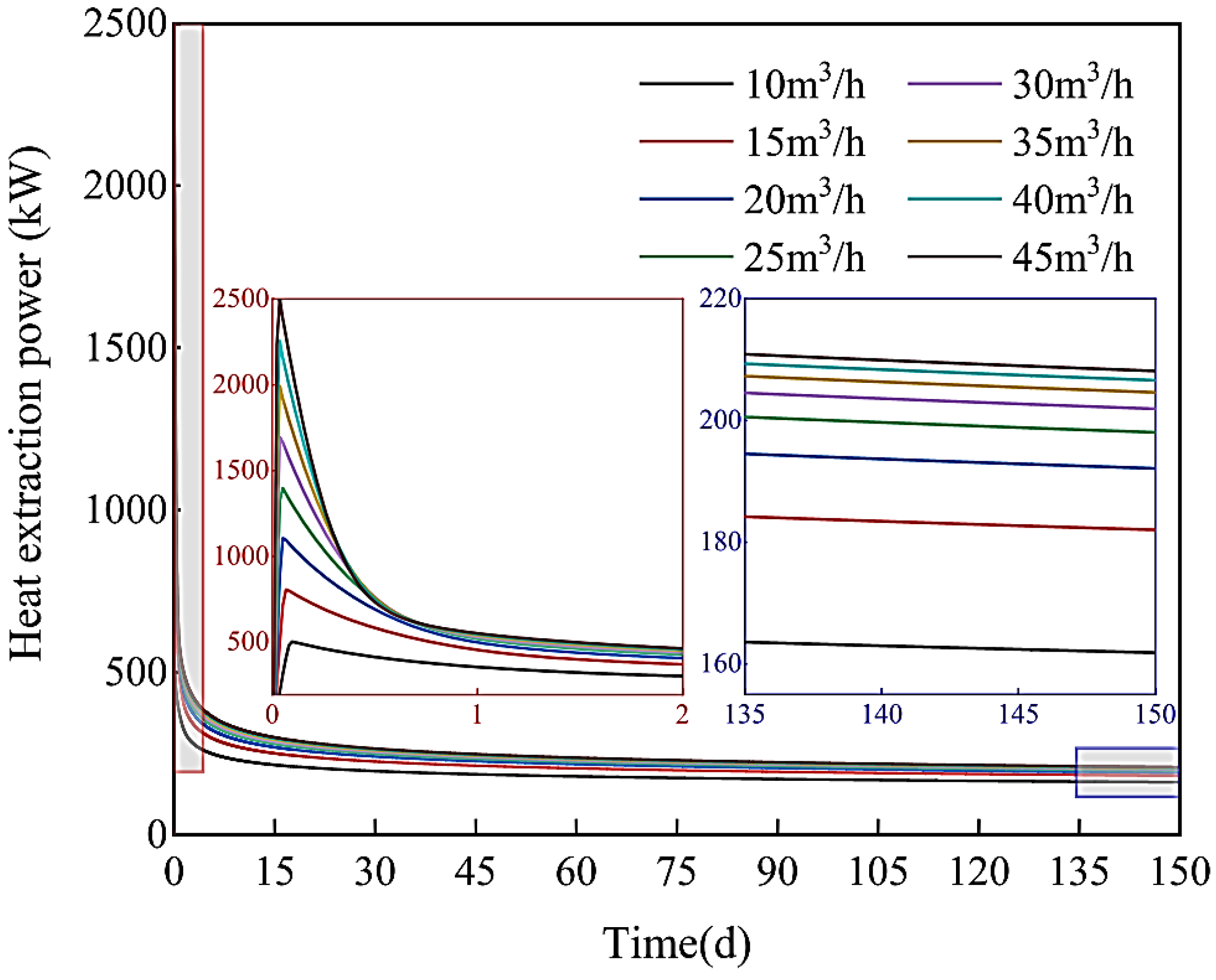
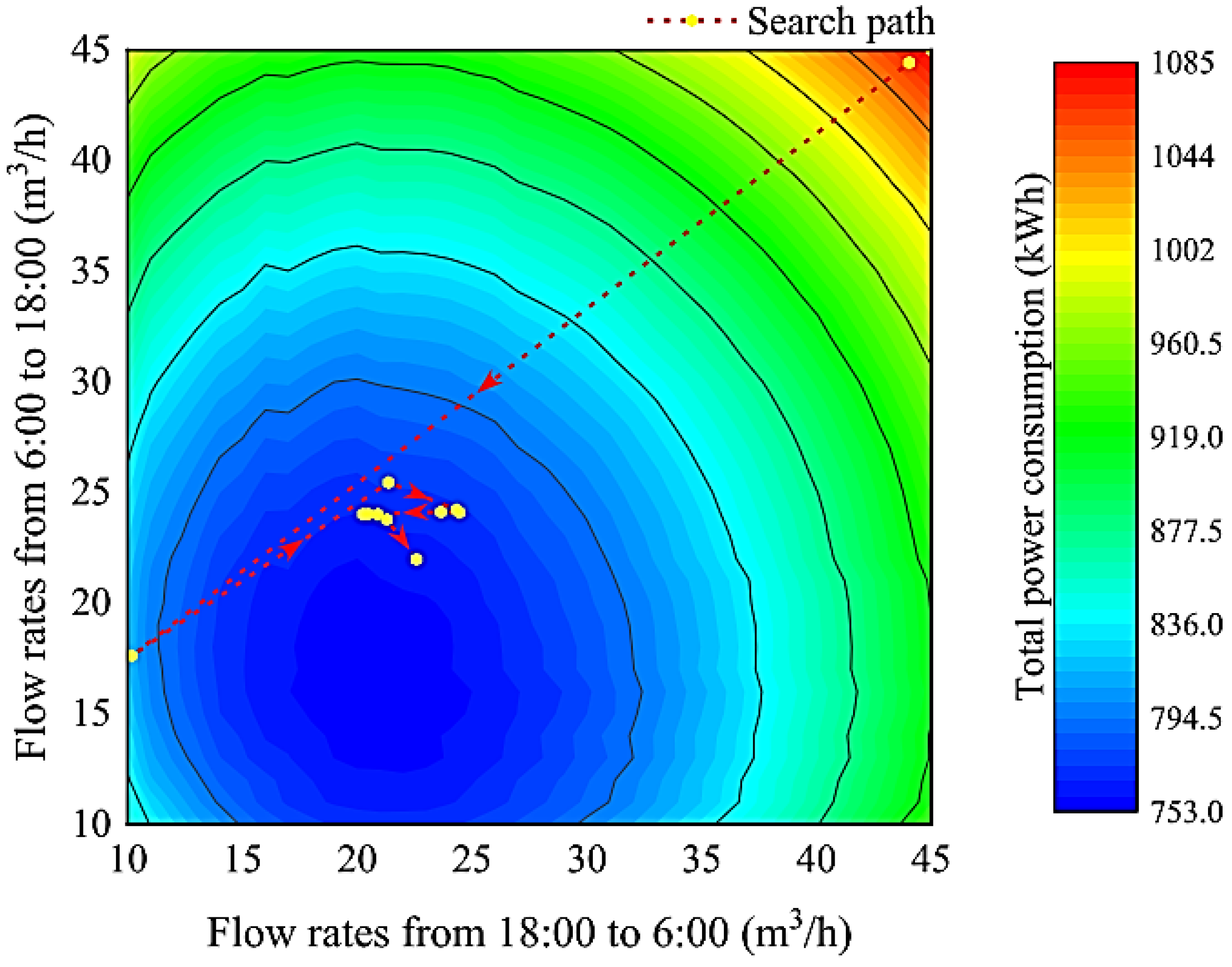
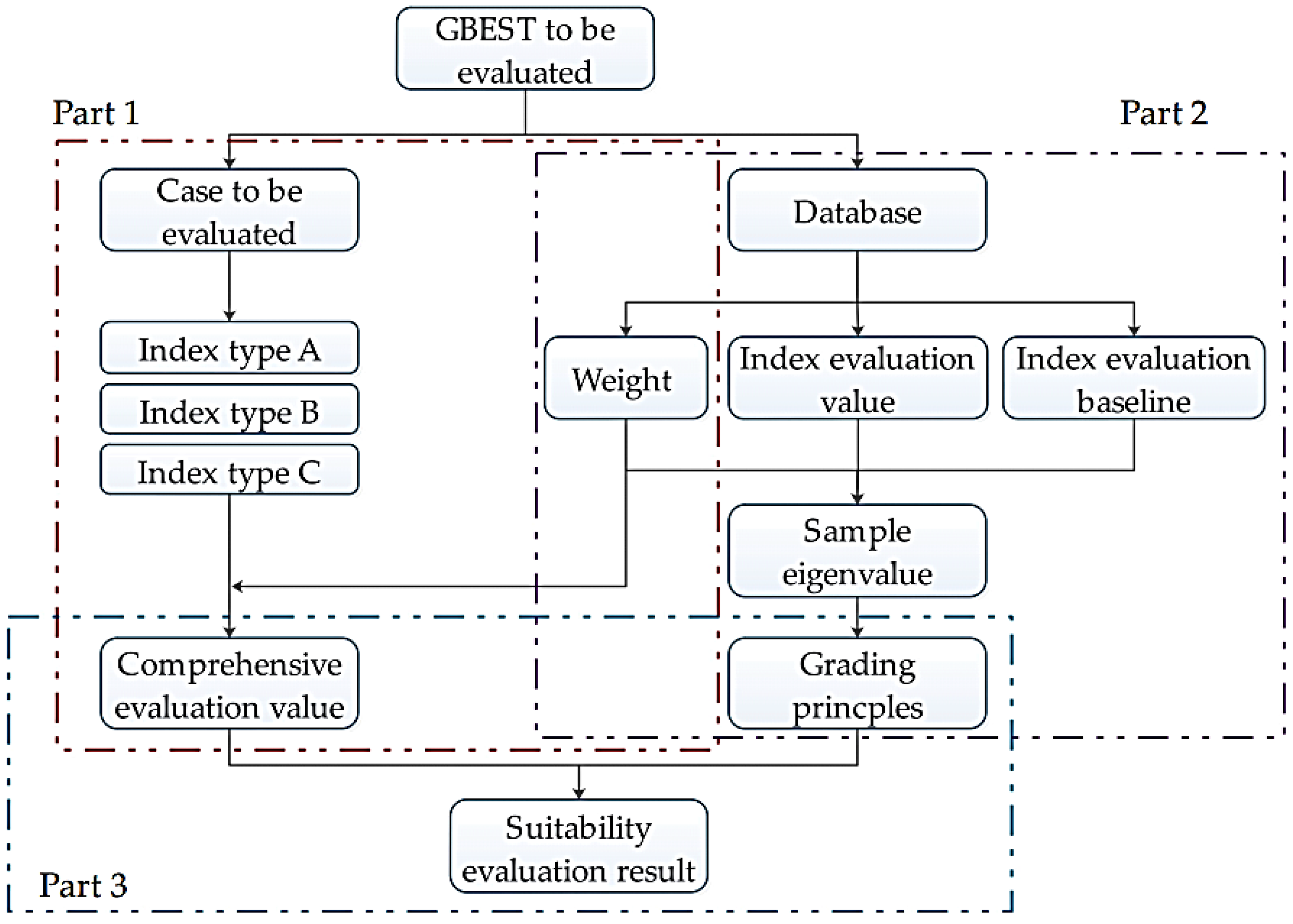


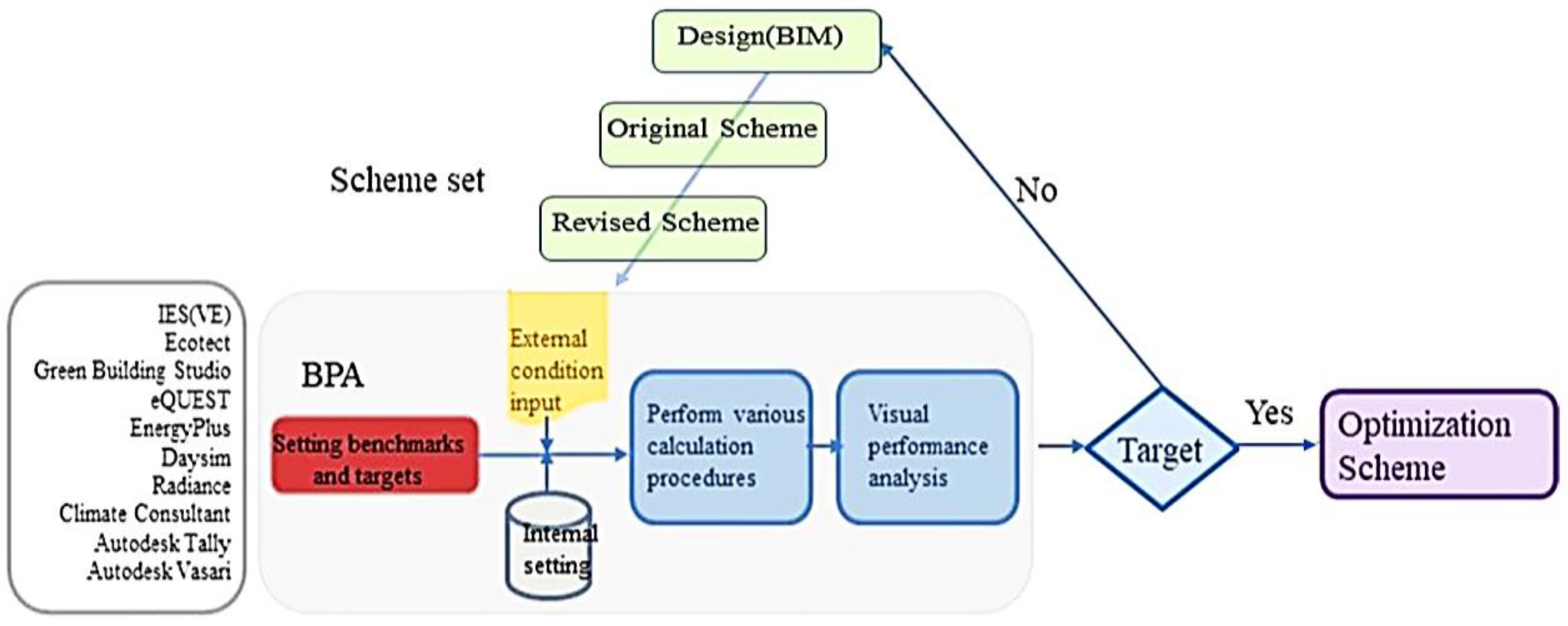
| Scope | Indicator | Unit |
|---|---|---|
| Solar availability | Solar irradiation on the façade surface | kWh/m2/year |
| Hours of solar exposure | Hours | |
| Thermal performance and comfort | Discomfort period | Hours; % |
| Heat gain | MJ/m2; kW/m2 | |
| Heat transmission(Heat flux) | W/m2 | |
| Predicted Mean Vote (PMV) | - | |
| Relative humidity | % | |
| Temperature(surface:glazing and massive wall;cavity) | °C | |
| Time lag | Hours | |
| Indoor air quality and acoustics | CO2 concentration | ppm |
| Acoustics | -dB; RT60 | |
| Energy efficiency | Cooling energy needs(or cooling energy needs savings) | kWh; kWh/year; % |
| Energy storage(and release) | Hours | |
| Heating energy needs(or heating energy needs savings) | kWh; kWh/year; % | |
| Environment | CO2 emissions(production and operational phase) | kg CO2 eq |
| Energy demand(production and operational phase) | kWh; kWh/m2 | |
| Economic | Annual savings | €; % |
| Internal rate of return (IRR) | - | |
| Investment costs | € | |
| Net present value(NPV) | - | |
| Payback period(PP) | Years | |
| Savings-to-investment ratio(SIR) | - |
| Heat Pump Operations | Cooling Season (From May to October) | Heating Season (From November to April) | |
|---|---|---|---|
| Individual operation of GSHPch and GSHPhw on its own ground loop | For heating or cooling (kWh) | 69,693 (100%) | 121,677 (100%) |
| For service hot water (kWh) | 22,708 (100%) | 34,901 (100%) | |
| Sum (kWh) | 92,401 (100%) | 156,578 (100%) | |
| Individual operation of GSHPch and GSHPhw on the shared ground loop | For heating or cooling (kWh) | 55,274 (79.3%) | 108,205 (88.9%) |
| For service hot water (kWh) | 19,498 (85.9%) | 33,320 (95.5%) | |
| Sum (kWh) | 74,772 (80.9%) | 141,525 (90.3%) | |
| Environmental Section | Weighting |
|---|---|
| Management | 12% |
| Health and Wellbeing | 15% |
| Energy | 19% |
| Transport | 8% |
| Water | 6% |
| Materials | 12.5% |
| Waste | 7.5% |
| Land Use and Ecology | 10% |
| Pollution | 10% |
| Total | 100% |
| Innovation(additional) | 10% |
| BREEAM Rating | %Score | Performance Percentage |
|---|---|---|
| Outstanding | ≥85 | Less than top 1% of U.K. new non-domestic buildings (innovator) |
| Excellent | ≥70 | Top 10% of U.K. new non-domestic buildings (best practice) |
| Very good | ≥55 | Top 25% of U.K. new non-domestic buildings (advanced good practice) |
| Good | ≥45 | Top 50% of U.K. new non-domestic buildings (intermediate good practice) |
| Pass | ≥30 | Top 75%Top 25% of U.K. new non-domestic buildings (standard good practice) |
| Unclassified | <30 |
| Basic Score of Control Item | Full Score of Evaluation Index Scoring Items | Full Score of Improvement and Innovation Bonus Items | |||||
|---|---|---|---|---|---|---|---|
| Safety and Durability | Health and Comfort | Occupant Convenience | Resources Saving | Environment Livability | |||
| Pre-evaluation score | 400 | 100 | 100 | 70 | 200 | 100 | 100 |
| Evaluation score | 400 | 100 | 100 | 100 | 200 | 100 | 100 |
Disclaimer/Publisher’s Note: The statements, opinions and data contained in all publications are solely those of the individual author(s) and contributor(s) and not of MDPI and/or the editor(s). MDPI and/or the editor(s) disclaim responsibility for any injury to people or property resulting from any ideas, methods, instructions or products referred to in the content. |
© 2023 by the authors. Licensee MDPI, Basel, Switzerland. This article is an open access article distributed under the terms and conditions of the Creative Commons Attribution (CC BY) license (https://creativecommons.org/licenses/by/4.0/).
Share and Cite
Yang, N.; Shi, W.; Zhou, Z. Research on Application and International Policy of Renewable Energy in Buildings. Sustainability 2023, 15, 5118. https://doi.org/10.3390/su15065118
Yang N, Shi W, Zhou Z. Research on Application and International Policy of Renewable Energy in Buildings. Sustainability. 2023; 15(6):5118. https://doi.org/10.3390/su15065118
Chicago/Turabian StyleYang, Nan, Weixiu Shi, and Zihong Zhou. 2023. "Research on Application and International Policy of Renewable Energy in Buildings" Sustainability 15, no. 6: 5118. https://doi.org/10.3390/su15065118
APA StyleYang, N., Shi, W., & Zhou, Z. (2023). Research on Application and International Policy of Renewable Energy in Buildings. Sustainability, 15(6), 5118. https://doi.org/10.3390/su15065118







